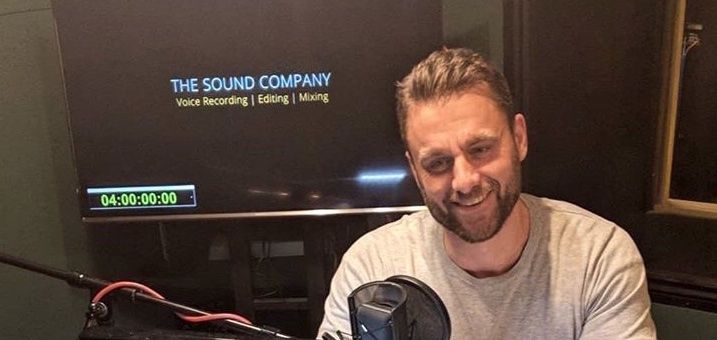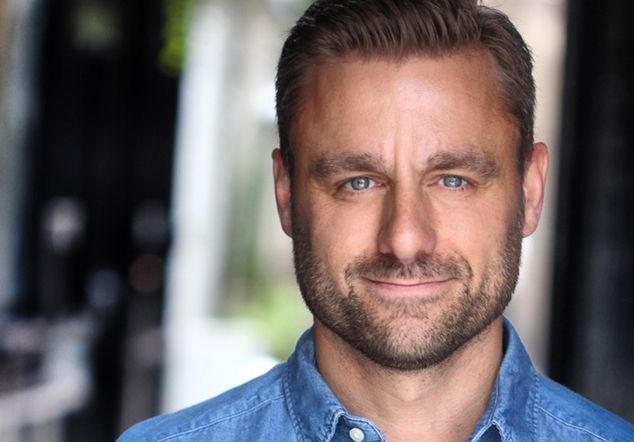Dr Lee Valls, Clinical Director of The London Practice returns to I am. I have - How it Helps, to discuss EMDR, who and how it can help
Dr Lee Valls, Counselling Psychologist and friend of Happiful, is back to share information and supportive advice, this time around the subject of EMDR.
Eye Movement Desensitisation and Reprocessing (EMDR) hit the headlines earlier in 2021, after Prince Harry shared that it was one form of therapy he worked with to manage and move through the impact of the trauma he experienced as a child, as a result of the sudden death of his Mother.
Lee is an EMDR practitioner and keen to explain how this particular therapy works, the benefits of this practise and how it can support people living with trauma, phobias, anxiety and depression too.
What happens in EMDR?
“You take the client back to a traumatic memory,” Lee explains. “And connect the client to an image and the feelings and thoughts that go with that memory. Then bilateral stimulation is used, either through tapping, sound or eye movements, as the therapist helps the client to reprocess the memory.”
“Processing happens when you connect cognition - thoughts - with emotion, and that’s when somebody is able to process that experience. It allows the client to process the memory and emotionally respond to it, whilst reframing the experience. This can lead to a difference in belief, the image will change and thoughts about themselves can change too.”
Expanding upon the personal shift that can take place while working with EMDR, Lee says that clients could move from a deeply negative mindset, such as thinking that they are less than or not enough, to one that is more positive.
Working with memory
“We try to go back to the earliest memory the client can recall,” Lee notes. "Working on that early memory can have a ripple effect on memories attached to that incident.”
Lee likens the process of EMDR to being on a fast-moving train. “When you’re on a fast-moving train and you look out of the window, you can’t see anything because it’s going at such a speed,” he explains. “That symbolises when the client is processing, they’re on that fast-moving train. When I stop the eye movements, I’ll ask the client what they see, we’ll discuss that, and then we’ll go once again.”
I see EMDR almost as condensed therapy because of how accelerated the processing is
Lee shares that this method accelerates processing for the client, which can often mean a huge amount of ground is covered in each session. “I see EMDR almost as condensed therapy because of how accelerated the processing is,” Lee says. “Because we identify the earliest trauma and work on that, subsequent trauma will be addressed too.”
What to expect
“What I would say, is expect to feel uncomfortable initially. It’s not always comfortable to feel vulnerable and get in touch with your emotions, so in the first instance expect some discomfort.
“The aim is to take the client right back to the centre of the trauma,” Lee continues. “And so this can be extremely emotional during the processing. However after the session, the client can feel much lighter and can reframe their experience.”
Lee adds that people often feel raw in the hours and sometimes days after EMDR, and it's important to note the feelings that have been brought up and maybe write them down to discuss at their next appointment with their therapist. A follow up appointment within the week is crucial.
“The process doesn’t start and finish within the clinic, it will continue afterwards. Clients might have dreams, new memories, thoughts and feelings. These should all be treated with interest and discussed with your practitioner.”

Lee Valls recording Series 1 of *I am. I have*
Who could this help?
“A lot of people are afraid to get in touch with their emotions and express them,” Lee says. “EMDR can help bypass that fear and get straight in touch with the emotion and it can be incredibly relieving for that person to be able to express themselves.”
An EMDR therapist will guide each person through the session and make sure they are mentally in a good place before they leave
Lee emphasises that there are significant measures taken by the therapist to make the sessions safe for all individuals. “An EMDR therapist will guide each person through the session and make sure they are mentally in a good place before they leave. We do this by creating safety, a little exercise before the EMDR session, where we anchor in a safe space so the client has something to hold onto if they are feeling unsettled.”
In addition to people who have experienced significant trauma, Lee notes that EMDR can be hugely beneficial for people who have PTSD (Post-Traumatic Stress Disorder), phobias, panic attacks, anxiety, depression and addressing grief.
Find out more about EMDR on Counselling Directory
Listen to Lee’s episode of I am. I have - How it helps
Listen to more of Dr Lee Valls’ episodes on anxiety, anger management, bereavement, grief and relationship therapy.
To find the right therapist for your needs, visit Counselling Directory


Comments